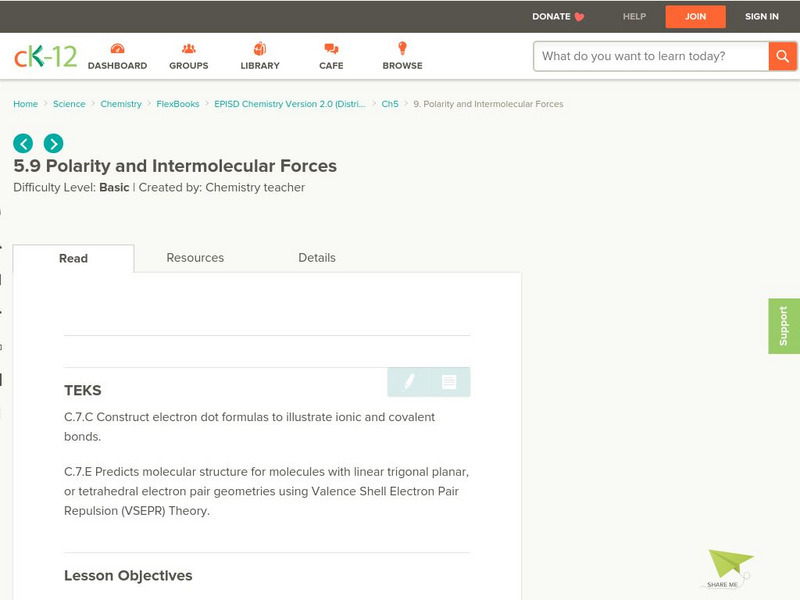Curated by
ACT
[Free Registration/Login may be required to access all resource tools.] The following online tutorial describes how the electronegativity difference between two atoms in a covalent bond results in the formation of a nonpolar covalent, polar covalent, or ionic bond. Students will describe how molecular geometry plays a role in determining whether a molecule is polar or nonpolar and they will dstinguish between the following three types of intermolecular forces: dipole-dipole forces, London dispersion forces, and hydrogen bonds. Students will also learn how chemical bonding and intermolecular forces influence the properties of various compounds.
3 Views
1 Download
Additional Tags
Classroom Considerations
- Knovation Readability Score: 3 (1 low difficulty, 5 high difficulty)

